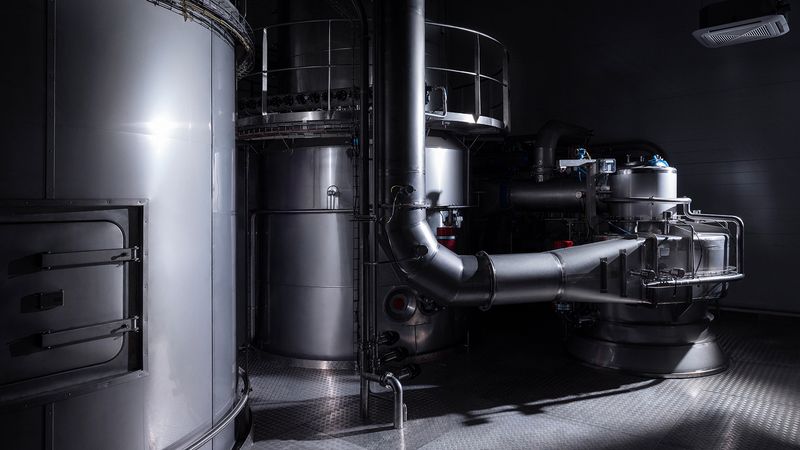

Chalmers researchers look to unlock the nutritional potential of sea lettuce
As the need for sustainable protein sources becomes ever more pressing, seaweed is emerging as a promising and untapped resource. Specifically, sea lettuce (Ulva fenestrata) holds great potential as an alternative protein source, complementing both animal-based proteins and more familiar plant-based options such as soy and pea. Sea lettuce is rich not only in protein but also in various essential nutrients. Unlike land-based crops, it requires no irrigation, fertilizers, or pesticides, making it an environmentally friendly option for future food production.
Despite its promise, the full potential of sea lettuce protein remains largely unexplored, primarily because its proteins are tightly bound within the plant’s cellular structures, making them difficult to extract and use in foods. However, researchers at Chalmers University of Technology in Sweden have developed a breakthrough extraction method that triples the efficiency of protein recovery from sea lettuce. This advancement opens up exciting possibilities for novel food products such as seaweed burgers and protein-rich smoothies.
"It has a savory umami taste with a mild, salty flavor, though it doesn't contain high levels of sodium," explained João Trigo, PhD in Food Science at Chalmers, describing the appeal of this new ingredient. "As a flavor enhancer for seafood dishes and products, it shows great potential. And the possibilities go beyond traditional uses. Imagine protein-packed smoothies or even seaweed-based ‘blue burgers'.” This protein concentrate, derived from sea lettuce, is a dark green powder, rich in nutrients and suitable for various food applications.

Sea lettuce, a type of macroalgae, grows on rocks in calm waters or floats freely on the surface, resembling ordinary lettuce leaves in appearance. It is versatile, flourishing in a range of environmental conditions, and is resilient against changes in salinity and nutrient availability. The simplicity of its cultivation and adaptability to different growing environments make it an ideal candidate for sustainable food production.
The 'protein shift' — a move toward more sustainable and healthier protein sources — is gaining traction as a way to reduce the environmental impact of food production while maintaining a nutritious diet for the global population. Plant-based proteins, mainly derived from pea, soy, and mushroom, are already common in grocery stores, yet the bounty of nutritious plant-based proteins from marine sources remains largely untapped. Seaweed offers a unique addition to this protein landscape, particularly for those looking for alternatives to traditional land-based crops.
At Chalmers University, the CirkAlg project is exploring how to develop processes that could fuel a new 'blue-green' food industry in Sweden, leveraging seaweed as a sustainable protein source. As part of the project, researchers published a scientific study detailing a novel extraction method that yields three times more protein from sea lettuce than previous techniques allowed. This breakthrough brings seaweed protein production closer to the affordability and scalability seen with widely used protein sources like soy and pea.
In addition to its protein content, sea lettuce provides essential nutrients such as vitamin B12 and omega-3 fatty acids, often found in oily fish. This nutrient profile is especially valuable for those who avoid animal products, as B12 is crucial for red blood cell formation, and Omega-3s support heart health and brain function. Sea lettuce cultivation has multiple benefits over conventional protein sources: it does not require freshwater irrigation, fertilizer, or insecticides, and it can grow under various conditions, making it a low-maintenance, sustainable option.
According to Ingrid Undeland, Professor of Food Science at Chalmers and CirkAlg project coordinator, "We will need to diversify our protein sources to meet both sustainability and nutritional demands. Algae is an excellent addition to the protein sources currently on the market, and marine-based options — referred to as 'blue proteins' — have remained underutilized."
In collaboration with the University of Gothenburg, Chalmers researchers are also working to boost the protein content in sea lettuce by cultivating it in nutrient-rich wastewater from the seafood industry. This approach not only enhances the protein yield in the seaweed but also recirculates valuable nutrients that would otherwise be lost, creating a circular food system. Tjärnö Marine Laboratory, affiliated with the University of Gothenburg and located in northern Bohuslän, Sweden, has conducted several successful cultivation experiments as part of the CirkAlg project. These trials demonstrate the feasibility of using industrial wastewater to increase seaweed protein content, potentially making it an even more attractive option for sustainable food production.
The newly developed extraction method is particularly noteworthy because it overcomes the challenges posed by the complex protein structure of sea lettuce. Unlike soy and pea proteins, seaweed proteins are more intricate, as they include fat-soluble membrane proteins that are challenging to separate. The first step in the new process involves opening the cell membranes of the seaweed to access these proteins. Using a high-pH water solution, researchers extract the different types of proteins, which are then precipitated by making the solution acidic. This causes the proteins to form aggregates, allowing them to be separated from the water as a protein-rich ingredient.

Remarkably, this protein-rich ingredient also retains some of the beneficial marine omega-3 fatty acids, which are usually associated with fish, and vitamin B12, a nutrient difficult to obtain from plant-based sources. A follow-up study confirmed the presence of these nutrients in the final product, indicating that this new seaweed protein ingredient can meet a broader range of nutritional needs than conventional plant-based proteins like soy.
The study, titled A new method for protein extraction from sea lettuce (Ulva fenestrata) via surfactants and alkaline aqueous solutions, was published in the journal Food Chemistry. The research team, which includes João Trigo, Sophie Steinhagen, Kristoffer Stedt, Annika Krona, Simone Verhagen, Henrik Pavia, Mehdi Abdollahi, and Ingrid Undeland, conducted this work at Chalmers University of Technology, the University of Gothenburg, and the Research Institutes of Sweden.
Looking ahead, the researchers at Chalmers hope to continue exploring ways to utilize the non-protein components of seaweed, potentially for use in food, materials, or even medical applications. "Our aim is that no part of the algae should go to waste," said Undeland. "We want to achieve both sustainability and commercial viability by making full use of these resources."
With seaweed's potential to provide high-quality proteins, essential nutrients, and versatile applications, the future of sustainable protein production may indeed lie beneath the waves. This work highlights a new chapter in food science, where marine resources like sea lettuce can contribute to global food security while also addressing pressing environmental concerns.
If you have any questions or would like to get in touch with us, please email info@futureofproteinproduction.com






